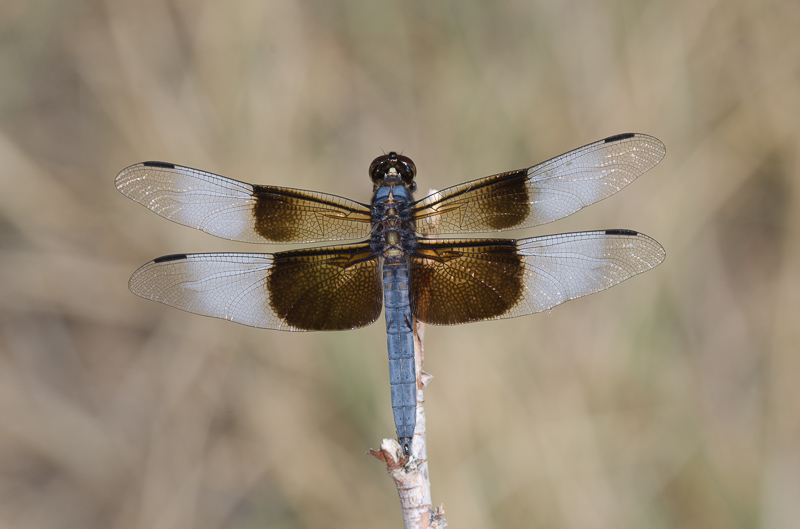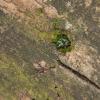Dragonflies are a familiar sight circling the airspace around a water body on a warm summer day, and most people recognize them readily on the wing or perched on vegetation. Their bright, dazzling colors and patterns have long captured our attention.
As a result, they are one of the more well-studied groups of insects. Despite this, much remains to be understood of dragonflies and damselflies at the species level, particularly details about their lives and their conservation status. The first global assessment of Odonata done by the International Union for Conservation of Nature found that one in six of the more than 6,000 species evaluated are at risk of extinction, as their aquatic and terrestrial habitats are degraded or disappear.
Where to find dragonflies
Dragonflies can be found near just about any water body in North America. Most of the common, widespread species readily observed are habitat generalists and may be found around all types of water, from ponds to roadside ditches. Others are habitat specialists and are associated with specific aquatic habitats, such as lowland fens, montane bogs, and still others with seeps trickling from rocky outcrops.
But dragonflies are of two worlds, and it is not uncommon to find them far away from water, near forest edges or in open meadows. Newly emerged adults generally leave their emergence sites to mature and to avoid harassment or predation from other mature dragonflies that are looking for a mate or a meal. Some dragonflies migrate and travel large distances from their breeding and emergence sites.
 Dragonflies typically rest with their wings spread, and have a clearly noticeable difference in size between their forewings and hindwings. Widow skimmer, photographed by Bryan E. Reynolds.
Dragonflies typically rest with their wings spread, and have a clearly noticeable difference in size between their forewings and hindwings. Widow skimmer, photographed by Bryan E. Reynolds.
Dragonfly nymphs are masters of the underwater realm
Although we mostly think of them as aerial insects, the core realm of dragonflies is undeniably water. It is where they begin and spend most of their lives, and where as adults they return to reproduce, laying eggs within or near aquatic habitats. The aquatic stage—known as nymph, naiad, or larva—may last years. The aquatic stage often passes unobserved by humans, but the nymphs are no less captivating than the adults.
Nymphs appear very different from the adult form, but share the predaceous behavior. Nymphs of all species have a remarkable “prehensile” lip that extends to capture prey. Using internal hydrostatic pressure, a nymph can shoot out the labium rather quickly, fast enough to secure such prey as other insects, worms, and even small fish.
 Damselfly and dragonfly nymphs live underwater. Their remarkable extending mouthparts enable them to catch a range of prey, including small fish. Common green darner, photographed by John Abbott.
Damselfly and dragonfly nymphs live underwater. Their remarkable extending mouthparts enable them to catch a range of prey, including small fish. Common green darner, photographed by John Abbott.
Nymphs possess different ways of capturing prey depending on the species, with some actively searching for a meal and others lying hidden in wait. Those that actively search are generally visual predators with large, complex eyes, while others, with smaller eyes, may be largely sedentary, using tactile or olfactory cues to detect prey. Still others do not fall neatly within these groups or may employ different feeding modes depending on the environment. For example, if fish are present, nymphs that actively hunt may opt for cryptically lying in wait, presumably to avoid predation themselves.
Unlocking the mysteries of dragonfly migration
Migration is perhaps one of the most remarkable of insect behaviors, and the long-distance, multi-generational migration of adult dragonflies easily rivals the more familiar migration of the legendary monarch butterfly. The wandering glider (Pantala flavescens), for instance, undertakes a journey from India to Africa, twice the distance of the monarch’s in North America—and across the open ocean.
Because dragonfly migration is likely dispersed and its specific endpoints are unclear, studying the phenomenon has proved to be less direct than, say, tracking a bird with a radio tracker or sticking a tag on a monarch’s wing in hopes of recapturing it. Finding a relatively small insect in a vast landscape is like searching for the proverbial needle in a haystack. Another obstacle to studying this behavior in dragonflies is the fact that it largely goes unnoticed.
Community scientists were helping unlock this mystery through the Migratory Dragonfly Partnership, a collaborative effort that was formed a decade ago by the Xerces Society, the U.S. Forest Service International Programs, Odonata Central, Peggy Notebaert Nature Museum, Pronatura Veracruz, and other partners, to better understand North America’s dragonfly migration. They found, for instance, that a common green darner (Anax junius) captured in the northern United States had started life in Florida or even further south, in the Caribbean or Mexico, part of a multi-generational migration from Central America and Puerto Rico to the United States and Canada. Unfortunately, due to funding constraints, the MDP is no longer active.
Dragonflies are key players in a healthy food web
Dragonflies form part of a rich food web, both as predators themselves, and as prey for birds, amphibians, fish, reptiles, and mammals. What’s more, they consume mosquitoes and other insects that are pesky to humans, and, by making a dent in those populations, provide us with a valuable service.
Dragonflies are integral to the ecosystems in which they are found. Because they straddle two distinct realms, they can be an excellent tool for understanding both aquatic and terrestrial ecology, and can serve as indicators of the health of, and ambassadors for, these ecosystems. Studying and observing dragonflies (and damselflies as well) can help to make us aware of the persistent threat of habitat degradation and loss in our environment; if we heed these warnings, we can initiate change before even more of these colorful and valuable species are at risk of extinction.
Learn more:
Field Guide to Migratory Dragonflies
Backyard Ponds: Guidelines for Creating & Managing Habitat for Dragonflies and Damselflies
How Our Gardening Choices Affect the Health of Our Waterways




